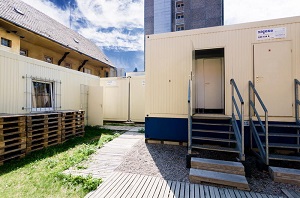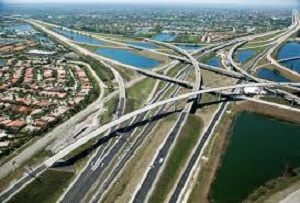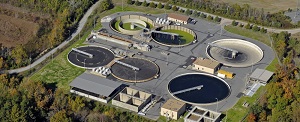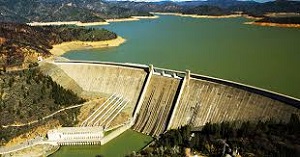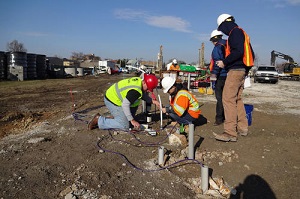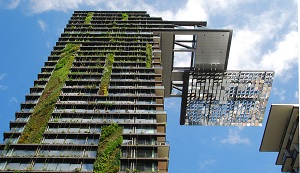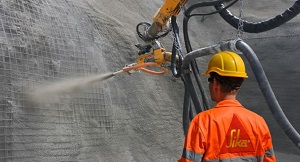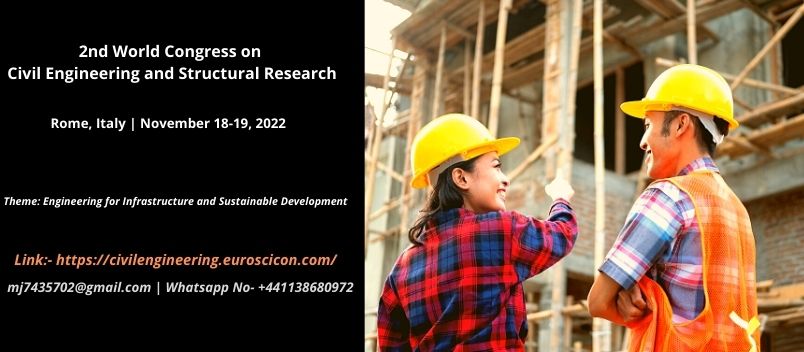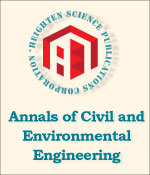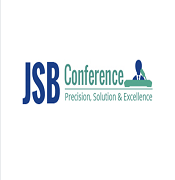EuroSciCon welcomes all professionals in the field of Construction and Structural Engineering to attend the upcoming World Congress on Construction and Structural Research Conference, to be held on 18-19 May, 2022 in Tokyo, Japan. The conference is based on the theme: Engineering for Infrastructure and Sustainable Development. Civil Engineering Conference 2022 will be the perfect platform for the global network as it brings together all the keynote speakers, famous speakers, entrepreneurs, CEOs from all over the world to create one of the best events. most enjoyable and memorable, with interactive sessions, world-class showcases and poster exhibitions. Progress in the field of construction and engineering is one of the important factors creating the economic strength of developed and developing countries. This is a 2-day meeting and you can participate in several forms of education including General Sessions, Poster Presentations and Workshops/Symposiums, Expert Meetings, Presentations oral and other informal and interactive communications. We hope you'll see at the World Congress on Construction and Structural Research Conference 2022 in Tokyo, Japan.
OPPURTUNITIES FOR ATTENDEES
For Researchers & Faculty:
• Speaker Presentations
• Poster Display
• Symposium hosting
• Workshop organizing
For Universities, Associations & Societies:
• Association Partnering
• Collaboration proposals
• Academic Partnering
• Group Participation
For Students & Research Scholars:
• Poster Competition (Winner will get Best Poster Award)
• Young Researcher Forum (YRF Award to the best presenter)
• Student Attendee
• Group registrations
For Business Delegates:
• Speaker Presentations
• Symposium hosting
• Book Launch event
• Networking opportunities
• Audience participation
For Companies:
• Exhibitor and Vendor booths
• Sponsorships opportunities
• Product launch
• Workshop organizing
• Scientific Partnering
• Marketing and Networking with clients
EuroSciCon organizes International Civil Engineering Meetings annually across Europe, Austria, Ireland, Germany, France, Liechtenstein, Lithuania, Finland, Luxembourg, Hungary, Italy, Norway, Poland, Denmark, Macedonia, Greece, Portugal, Romania, Czech Republic, Switzerland, United Kingdom, Belgium, Scotland, Latvia, Ukraine, Sweden, Denmark, Spain, Netherlands Russia, Bulgaria, France, with solitary subject of quickening logical revelations.
Topics:
Civil Engineering and Architecture
Structural and Construction Engineering
Building Technology and Construction Management
Steel Structures and Construction
Structural Analysis and Designing
Structural Health Monitoring
Reinforced Concrete Structure
Modular Constructions
Earthquake Engineering and Seismic Risk Mitigation
Transportation and Traffic Engineering
Pavement Design
Environmental Engineering
Water Resource Engineering and Technology
Geotechnical Engineering
Sustainability & Green Structures
Materials Science and Engineering
Tunnel Engineering and Construction
Automation in Construction
Designing of Special Structures and Concrete Technology
Construction Market Research and Industry Analysis
Who should attend?
Engineers who are specialized on the specific fields like Civil engineers, Structural Engineers, Mechanical Engineers (To Present Their case reports and to update their Knowledge at the conference), Civil industry professionals, Building services engineer, Building control surveyor, Environmental engineers who are related to that topics. Bridge Construction Industries, Renewable Energy Industries, Software Publishing Houses specializing in Construction Design software’s are the Potential Exhibitors for the Respective Conferences. Civil Engineering associations, Earthquake Engineering Research Institutes, Institutions of Civil Engineering Surveyors, Institutions of Transportation Engineers; Students and Delegates in related areas.
Why to attend??
With members from around the world focused on the field of Civil Engineering; this is your single best opportunity to reach the largest assemblage of participants from the global Civil Engineering Industries. Conduct demonstrations, distribute information, meet with current and potential civil traders, make a splash with a new product line, and receive name recognition at this 2-days event. World-renowned speakers, the most recent techniques, tactics, and the newest updates in Civil Engineering fields are hallmarks of this conference. Conference brings together experts, researchers, scholars and students from all areas of Civil Engineering, Architectural, Structural Engineering, Geo-Technical, Environmental and other related areas, Civil associations, civil traders, building and construction professionals, Developers, Contractors, Interior Design, Consultancy, Building Material manufacturers.
About Japan:
Japan consists of several thousands of islands, of which Honshu, Hokkaido, Kyushu and Shikoku are the four largest. Japan's closest neighbors are Korea, Russia and China. The Sea of Japan separates the Asian continent from the Japanese archipelago.
Japan's area is comparable to that of Germany or California. Japan's northernmost islands are located on a similar geographical latitude as Milan or Portland, while her southernmost islands are on a similar latitude as the Bahamas. More than 50% of the country is mountainous and covered by forests. Japan is politically structured into 8 regions and 47 prefectures.The population of Japan is about 125,000,000, including approximately three million foreign residents.
Because Japan is located in a region, where several continental plates meet, the country experiences frequent earthquakes. For the same reason, there are many volcanoes and natural hot springs in Japan. Japan's most famous volcano and highest mountain is Mount Fuji.Due to the large north-south extension of the country, the climate varies strongly in different regions. The climate in most of the major cities, including Tokyo, is temperate to subtropic and consists of four seasons. The winter is mild and the summer is hot and humid. There is a rainy season in early summer, and typhoons hit parts of the country every year, especially during late summer. The climate of the northern island of Hokkaido and the Sea of Japan coast is colder, and snow falls in large amounts. In Okinawa, on the other hand, the mean temperature of January is a warm 17 degrees Celsius.
Track 1: Civil Engineering and Architecture
Civil engineering is a professional engineering discipline that deals with the outline, development, and upkeep of the physical and normally constructed condition, including works like streets, spans, trenches, dams, airplane terminals, sewerage frameworks, pipelines and railways. Civil engineering is customarily broken into various sub-disciplines. It is the second-most established designing order after military engineering, and it is characterized to recognize non-military building from military engineering. Civil engineering happens in general society division from city through to national governments, and in the private part from singular property holders through to universal organizations.
There are a number of sub-disciplines within the broad field of civil engineering. General civil engineers work closely with surveyors and specialized civil engineers to design grading, drainage, pavement, water supply, sewer service, dams, electric and communications supply. General civil engineering is also referred to as site engineering, a branch of civil engineering that primarily focuses on converting a tract of land from one usage to another. Site engineers spend time visiting project sites, meeting with stakeholders, and preparing construction plans. Civil engineers apply the principles of
geotechnical engineering,
structural engineering,
environmental engineering,
transportation engineering and
construction engineering to residential, commercial, industrial and public works projects of all sizes and levels of construction.
Sub-Tracks:
Track 2: Structural and Construction Engineering
Structural engineering is concerned with the structural outline and structural examination of structures, spans, towers, flyovers (bridges), burrows, seaward structures like oil and gas fields in the ocean, aero-structure and different structures. This includes distinguishing the heaps which follow up on a structure and the powers and stresses which emerge inside that structure because of those heaps, and afterward designing the structure to effectively support and oppose those heaps. The heaps can act naturally weight of the structures, other dead load, live loads, moving (wheel) stack, wind stack, tremor stack, stack from temperature change and so forth. The structural designer must outline structures to be safe for their clients and to effectively satisfy the capacity they are intended for (to be useful). Because of the idea of some stacking conditions, sub-teaches inside structural engineering have risen, including wind engineering and
seismic tremor engineering.
Design considerations will incorporate quality, firmness, and strength of the structure when subjected to loads which might be static, for example, furniture or self-weight, or dynamic, for example, wind, seismic, group or vehicle loads, or momentary, for example, transitory development loads or effect. Different considerations incorporate cost, constructability, safety, style and sustainability.
Sub-Tracks:
Track 3: Building Technology and Construction Management
The Building Technology and Construction Management division functions as a center of teaching, learning, and research in Building Physics, Concrete Technology, and
Construction Management. Construction usually refers to the erection of large structures such as buildings, ship, aircraft, dams, roads, and bridges. By extension, Construction Technology Management refers to the planning, coordination and successful implementation of such structures. A branch of Civil Engineering, Construction Technology and Management is a fusion of civil engineering and construction management which may incorporate the principles of drainage, water supply and distribution, heating and ventilation, and recycling of construction and demolition waste management.
Sub-Tracks:
Track 4: Steel Structures and Construction
Structural steel is a classification of steel utilized for making development materials in an assortment of shapes. Numerous structural steel shapes appear as a lengthened bar having a profile of a particular cross segment. Structural steel shapes, sizes, synthetic arrangement, mechanical properties, for example, qualities, stockpiling rehearses, and so on, are directed by guidelines in most industrialized nations. Most structural steel shapes, for example, I-pillars, have high second snapshots of territory, which implies they are hardened in regard to their cross-sectional region and consequently can bolster a high load without inordinate hanging.
Steel Construction is the development of a metal structure created with steel for the internal support and for exterior. Advantages are there of utilizing steel are steel is cost effective, energy efficient product which does not simply warp, buckle, twist or bend, and is therefore easy to modify and offers design flexibility.

Sub-Tracks:
Track 5: Structural Analysis and Designing
Structural analysis is done by an examination of the genuine structure, on a model of the structure made on some scale, and by the use of numerical models. Tests are directed on the genuine structure when creation is expected of comparable structures in expansive amounts, similar to edges of a specific auto, or when the test costs are satisfactory because of the noteworthiness of the assignment. At the point when components of the primary structures are to be inspected, at that point models are utilized for the estimation of the diverse burdens to be persevered. Most auxiliary investigations are directed on the scientific models, in which the model could be flexible or inelastic, powers might be static or dynamic, and the model of the structure may be two dimensional or three dimensional. Structural analysis is an essential subject of structural designing that assesses the distinctive loads on structures, and their effects. It is an exact technique to learn the ability of the structures to withstand the normal loads, and help with planning the structures in like manner.
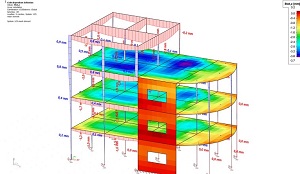
Sub-Tracks:
Track 6: Structural Health Monitoring
Structural health monitoring (SHM) alludes to the way toward executing a damage detection and portrayal technique for designing structures. Here damage is characterized as changes to the material or potentially geometric properties of a structural framework, including changes to the limit conditions and framework availability, which adversely influence the framework's execution. The SHM procedure includes the perception of a framework after some time utilizing intermittently tested dynamic reaction estimations from a variety of sensors, the extraction of harm delicate highlights from these estimations, and the factual examination of these highlights to decide the present condition of framework health. For long term SHM, the yield of this procedure is intermittently refreshed data with respect to the capacity of the structure to play out its expected capacity in light of the inescapable maturing and degradation coming about because of operational conditions. After extraordinary occasions, for example, seismic tremors or impact stacking, SHM is utilized for quick condition screening and intends to give, in close constant, solid data with respect to the uprightness of the structure. Foundation investigation assumes a key job out in the open wellbeing with respect to both long haul harm amassing and post extraordinary occasion situations. As a feature of the quick improvements in information driven advances that are changing numerous fields in building and science, machine learning and PC vision methods are progressively prepared to do dependably diagnosing and arranging designs in picture information, which has clear applications in review settings.
Sub-Tracks:
Track 7: Reinforced Concrete Structure
Reinforced concrete is the concrete in which steel is inserted in such a way, to the point that the two materials act together in opposing powers. The reinforcing steel—bars, bars, or work—ingests the tractable, shear, and now and again the compressive stresses in a concrete structure.
Plain concrete does not effectively withstand ductile and shear stresses caused by wind, tremors, vibrations, and different powers and are in this way inadmissible in most basic applications. In reinforced concrete, the rigidity of steel and the compressive quality of concrete cooperate to enable the part to manage these stresses over significant ranges.
The innovation of reinforced concrete in the nineteenth century altered the development business, and concrete wound up one of the world's most normal building materials.
Sub-Tracks:
Track 8: Modular Constructions
Modular construction is a term used to portray the utilization of processing plant created pre-designed building units that are conveyed to site and collected as huge volumetric parts or as generous components of a building. The modular units may frame finish rooms, parts of rooms, or separate much adjusted units, for example, toilets or lifts.
The accumulation of discrete modular units more often than not shapes a self-supporting structure in its own particular right or, for tall structures, may depend on an autonomous basic system.
The main sectors of application of modular construction are:
Track 9: Earthquake Engineering and Seismic Risk Mitigation
Earthquake engineering is an interdisciplinary branch of engineering that outlines and examinations structures, for example, buildings and bridges, in view of earthquakes. Its general objective is to make such structures more impervious to earthquakes. An earthquake (or seismic) build means to develop structures that won't be harmed in minor shaking and will stay away from genuine harm or crumple in a noteworthy earthquake. Earthquake engineering is the logical field worried about securing society, the indigenous habitat, and the man-made condition from earthquakes by constraining the seismic hazard to
socio-monetarily worthy levels. Customarily, it has been barely characterized as the investigation of the conduct of structures and geo-structures subject to seismic stacking; it is considered as a subset of structural engineering, geotechnical engineering, mechanical engineering, chemical engineering, applied physics, and so on.
In any case, the tremendous costs experienced in late earthquakes have prompted a development of its extension to include disciplines from the more extensive field of structural engineering, mechanical engineering and from the social sciences, especially sociology, political science, economics and finance.
Sub-Tracks:
Track 10: Transportation and Traffic Engineering
Traffic engineering is a part of civil engineering that utilizes engineering techniques to accomplish the sheltered and productive development of individuals and merchandise on roadways. It focuses essentially around research for sheltered and effective traffic stream, for example, road geometry, sidewalks and crosswalks, cycling infrastructure, traffic signs, road surface markings and traffic lights. Traffic engineering manages the functional part of transportation framework, aside from the infrastructures provides.
The design parts of transport engineering includes the estimation of transportation facilities (what number of paths or how much capacity the facilities has), deciding the materials and thickness utilized in pavement, designing the geometry (vertical and level arrangement) of the roadway (or track). Operations and management include movement engineering, with the goal that vehicles move easily on the road or track. Older techniques include signs, signals, markings, and tolling. Fresher innovations include intelligent transportation systems, including propelled explorer information systems, such as variable message signs), advanced traffic control systems (such as ramp meters), and vehicle infrastructure integration. Human components are a part of transport engineering, especially concerning driver-vehicle interface and user interface of road signs, signals, and markings.
Sub-Tracks:
Track 11: Pavement Design
A highway pavement is a structure comprising of superimposed layers of handled materials over the common soil sub-review, whose primary function is to convey the connected vehicle burdens to the sub-review. The pavement structure ought to have the capacity to give a surface of satisfactory riding quality, sufficient slip opposition, great light reflecting characteristics, and low commotion contamination. A definitive point is to guarantee that the transmitted stresses because of wheel load are adequately diminished, so that they will not exceed bearing capacity of the subgrade.
Two sorts of pavements are by and large perceived as filling this need, specifically Flexible pavements and Rigid pavements. Improper design of pavements prompts early failures of pavements influencing the riding quality.
Sub-Tracks:
Track 12: Environmental Engineering
Environmental engineering is the branch of engineering that is worried about shielding individuals from the impacts of unfavourable environmental impacts, for example, contamination, and additionally enhancing environmental quality. Environmental specialists work to enhance reusing, squander transfer, general wellbeing, and water and air contamination control.
Sub-Tracks:
Track 13: Water Resource Engineering and Technology
Water resources engineering and technology experts study and make recommendations on new water treatment facilities, reactors, pumping stations, waste frameworks and pipelines. Water resources engineering and technology is an area of study within the engineering sciences managing the hydraulic and fluid mechanics standards behind water distribution, flow and manipulation.
Water resources engineers outline and actualize water frameworks. The design may focus around hydraulics, pipelines and research facility tests, while the execution may deal with flood damage, wastewater transfer and consumable water distribution, potable water distribution and reclamation, environmental change examination, aquifer stockpiling and recuperation and surface/groundwater connection.
Sub-Tracks:
Track 14: Geotechnical Engineering
Geotechnical Engineering is a part of structural engineering worried about the engineering behavior of earth materials. Geotechnical engineering incorporates researching existing subsurface conditions and materials; surveying dangers presented by site conditions; designing earthworks and structure foundations; and monitoring site conditions, earthwork and establishment construction.
A typical geotechnical engineering project starts with a site investigation of soil and bedrock on and underneath a zone. Investigations can incorporate the evaluation of the hazard to humans, property and the earth from common perils, for example, earthquakes, landslides, sinkholes, soil liquefaction, debris flows and rock falls. Foundations are outlined and built for structures of different sizes, for example, elevated structures, bridges, medium to huge business buildings, and littler structures where the soil conditions don't permit code-based plan. Foundations worked for over the ground structures incorporate shallow and profound foundations. Holding structures incorporate earth-filled dams and holding walls. Earthworks incorporate banks, burrows, levees, channels, repositories, testimony of dangerous waste and sterile landfills.
Geotechnical engineering is additionally identified with coastal and ocean engineering. Coastal engineering can include the plan and construction of wharves, marinas, and jetties. Ocean engineering can include establishment and stay frameworks for offshore structures, for example, oil stages.
Sub-Tracks:
Track 15: Sustainability & Green Structures
Green building (otherwise called green construction or sustainable building) alludes to both a structure and the use of procedures that are environmentally dependable and asset effective all through a building's life-cycle: from planning to outline, construction, operation, maintenance, renovation, and demolition. This requires close cooperation of the contractual worker, the designers, the architects, and the customer at all task stages. The Green Building practice expands and supplements the established building configuration worries of economy, utility, durability, and comfort.
Some of the more common green construction practices include:
• Using sustainable building materials like recycled glass and steel, as well as renewable materials like bamboo and rubber;
• Installing energy-efficient windows and doors;
• Using lower-VOC (volatile organic compounds) paints and stains;
• Constructing green roof systems (aka “plants on your roof”) that offer many benefits, including onsite gardens, rainwater management and protection from the effects of harmful UV light;
• Adding water harvesting and purification systems that don’t just manage, but also make the most use of rainfall;
• Maximizing natural light, which cannot only save on lighting requirements (and subsequently energy costs), but can also help keep buildings warm in colder months; and
• Using renewable energy to power the building: for example, installing a commercial solar panel system.
Sub-Tracks:
Track 16: Materials Science and Engineering
Materials science is firmly identified with civil engineering. It examines crucial qualities of materials, and manages earthenware production, for example, cement and blend black-top concrete, solid metals, for example, aluminum and steel, and thermosetting polymers including polymethylmethacrylate (PMMA) and carbon fibers. Materials engineering includes protection and prevention (paints and wraps up). Alloying joins two kinds of metals to create another metal with wanted properties. It consolidates components of connected material science and science. With late media consideration on nanoscience and nanotechnology, materials engineering has been at the bleeding edge of academic research. It is additionally a vital piece of forensic engineering and failure analysis.
Sub-Tracks:
Track 17: Tunnel Engineering and Construction
Tunnels are dug in sorts of materials fluctuating from delicate mud to hard shake. The technique for burrow development relies upon such factors as the ground conditions, the ground water conditions, the length and distance across of the passage drive, the profundity of the passage, the coordination of supporting the passage removal, the last utilize and state of the passage and proper hazard administration.
There are three fundamental kinds of tunnel construction in common use:
• Cut-and-cover tunnel (constructed in a shallow trench and then covered over)
• Bored tunnel, constructed in situ, without removing the ground above. They are usually of circular or horseshoe cross-section.
• Immersed tube tunnel, sunk into a body of water and laid on or buried just under its bed.
Sub-Tracks:
Track 18: Automation in Construction
The construction business is one of the largest industries in the world, despite its tremendous potential; many firms are struggling due to a shortage of skilled workers, weak productivity growth, and new data showing that the industry generates immense waste, both in terms of human productivity and physical materials. Today’s proponents of technology have pointed to a lack of automation and adoption of technology as the primary reasons for the industry’s poor performance – construction is one of the least digitized industries worldwide, and has resultantly failed to significantly increase worker productivity in decades.
The effective use of automation is one of the greatest opportunities, as well as one of the greatest challenges, facing the construction industry. The major components of an automation strategy, as considered in this paper, are computer-aided engineering and design (CAE/CAD), computerized data bases, feedback of as-built data, automated materials handling, artificial intelligence, and robotics.
Sub-Tracks:
Track 19: Designing of Special Structures and Concrete Technology
Concrete Technology focuses on concrete making materials including supplementary cementitious materials. Concrete generation process additionally forms a piece of the discourse. Experiencing the course one would grow direct learning on concrete generation process and properties and employments of concrete as a cutting edge material of development. This technology empowers one to settle on proper choice with respect to fixing choice and utilization of concrete.
Strengthened cement is a composite material in which cement's by and large low solidness and pliability are killed by the mix of fortification having higher flexibility or versatility. The fortress is ordinarily, anyway not by any stretch of the creative ability, Steel reinforcing bars (rebar) and is for the most part inserted idly in the solid before the solid sets. Managing outlines are all around wanted to limit malleable anxieties especially region of the solid that may cause prohibited breaking and furthermore partner disappointment. Present day strengthened cement can contain swayed supporting materials made of Steel, polymers or substitute composite material related to rebar or not. Strengthened cement may in like way be forever worried (in weight), to overhaul the direct of the last structure under working weights. In the United States, the most comprehensively saw frameworks for doing this are known as pre-tensioning and post-tensioning.
Sub-Tracks:
Track 20: Construction Market Research and Industry Analysis
Construction, in the sense of architectural and civil engineering, is the building of real property. The worldwide construction industry represents a few trillion dollars. Given the measure of the market and its prospects for further extension, the construction business speaks to an alluring open door for material suppliers and segment suppliers. Basic to accomplishment in the construction business is learning of market patterns, item blend shifts, client needs and viable market procedures. Our ceaseless networking with clients, suppliers and competitors creates complete visibility across the whole value chain of the construction industry and enables our clients to settle on sure business choices. Keeping in mind the end goal to finish a construction project, a scope of variables must be considered, including planning, logistics, wellbeing of the construction site, building materials, public inconvenience, and environmental impact and scheduling. Different elements that ought to be considered are budgetary, design and legitimate issues, particularly since there's dependably the likelihood of a negative result amid a construction project, for example, basic fall and cost overwhelms. Other than contractual workers, different gatherings of professionals can meet up to perform construction work, including project managers, construction engineers, design engineers, project architects, logistics professionals, construction managers, plumbers, surveyors, electricians, laborers and skilled workers.
Sub-Tracks:
The International Conference on Structural and Civil Engineering Research (CIVIL ENGINEERING 2019) hosted through EuroSciCon took area at Rome, Paris all through June 6-7, 2019. It was once organized via EuroSciCon and generous response used to be obtained from the Editorial Board Members of EuroSciCon Journals as well as from eminent scientists, gifted researchers, and young scholar community. Researchers and students who attended from one of a kind parts of the world made the convention one of the most successful and productive activities in 2018 from EuroSciCon. The two-day application witnessed thought-provoking keynote and plenary presentations from professionals in the subject of Structural and Civil Engineering Research, highlighting the theme, "Advance Technologies in Structure and Civil Engineering".
The meeting used to be carried out through a number sessions, in which the discussions have been held on the following major scientific tracks:
• Civil Engineering and Architecture
• Steel Structures and Construction
• Earthquake Engineering and Disaster Management
• Structural Analysis and Designing
• Reinforced Concrete Structure
• Building Technology and Construction Management
• Modular Constructions
The highlights of the meeting were from the eminent keynote lectures from:
Civil Engineering 2019 Conference performed a vital role in promoting multidisciplinary interactions between Structural and Civil Engineering Research to decorate lookup in Civil Engineering. The software covered cutting-edge and emerging lookup innovations in the discipline of Civil Engineering.
We would mainly thank our Moderator for his contribution to the conference.
We definitely thank the Organizing Committee Members and the Editorial board of Civil Engineering 2019 Conference for their gracious presence and continuous aid for the duration of the lawsuits of this event. With the precious feedback and beneficent response obtained from the contributors of the event, EuroSciCon would like to announce the commencement of “World Congress on Structural and Civil Engineering Research” at some stage in May 18-19, 2022 in Japan, Tokyo with the theme: “Engineering for Sustainable Infrastructure & Development”.
Let us meet once more @ Civil Engineering 2022




